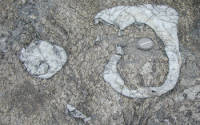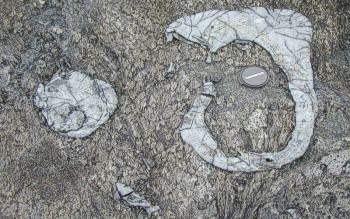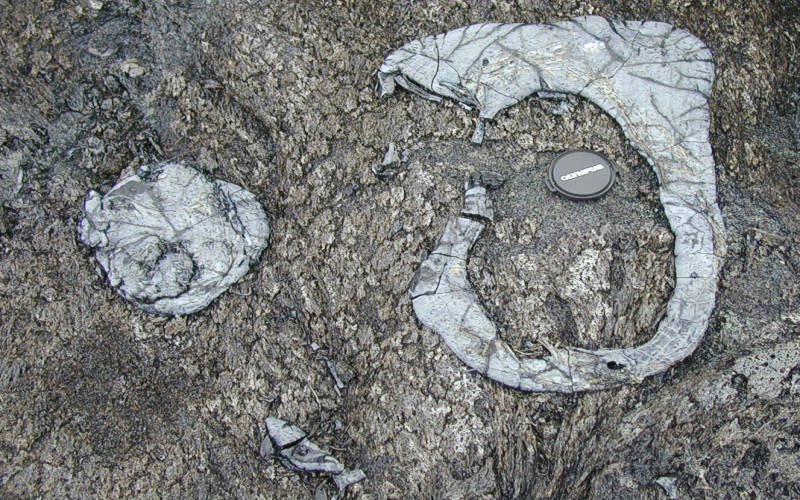|
|

Dense glassy spatter erupted from Pu`u `O`o in 1998 |

Photograph by D.A. Swanson, March 20, 2000
Lens cap 4.5 cm in diameter.
|
The pieces of dense spatter shown in these photographs typify those produced during drainback events in small lava ponds in the crater of Pu`u `O`o. This spatter was formed in April-May 1998, the latest time that large clots of spatter have been tossed over the east rim of the main crater. Each drainback event followed an episode of upwelling of lava in the pond, lasting minutes to more than an hour. The upwelling is driven by large, relatively isolated gas bubbles that lift lava up the feeding conduit into the lake. This process is often termed gas pistoning. The drainback itself takes place when bubbles break the crusted surface of the piston. Then gas rapidly escapes, and lava pours back down the vent. Drainbacks last only seconds to 1-2 minutes and are typically quite vigorous. Escaping gas tosses out clots of lava, which are deformed as they fly through the air. Fountains as high as 40-50 m are common during the larger drainbacks. Generally the spatter clots are still plastic when they land and can mold around irregularities in the ground surface.
|

Photograph by D.A. Swanson, March 20, 2000
Lens cap 4.5 cm in diameter.

Photograph by D.A. Swanson, March 20, 2000
Lens cap 4.5 cm in diameter.
        

The URL of this page is http://hvo.wr.usgs.gov/archive/spotlight_images/20000320-76_DAS.html/
Contact: hvowebmaster@usgs.gov
Updated: 10 Apr 2000
|